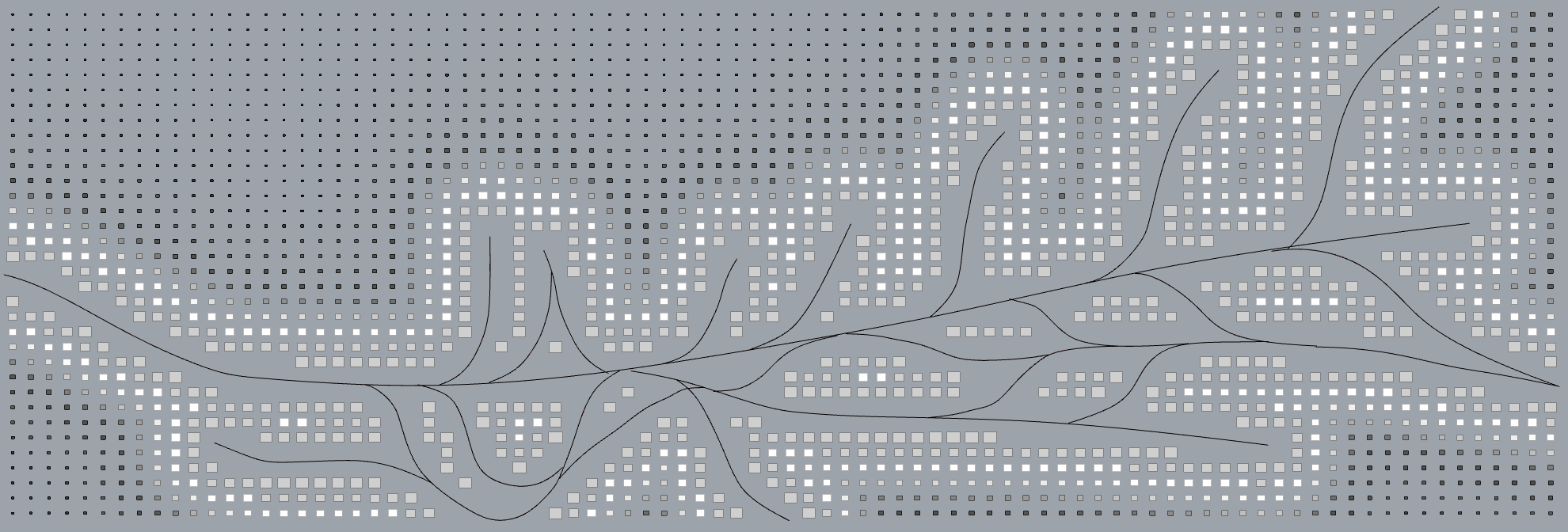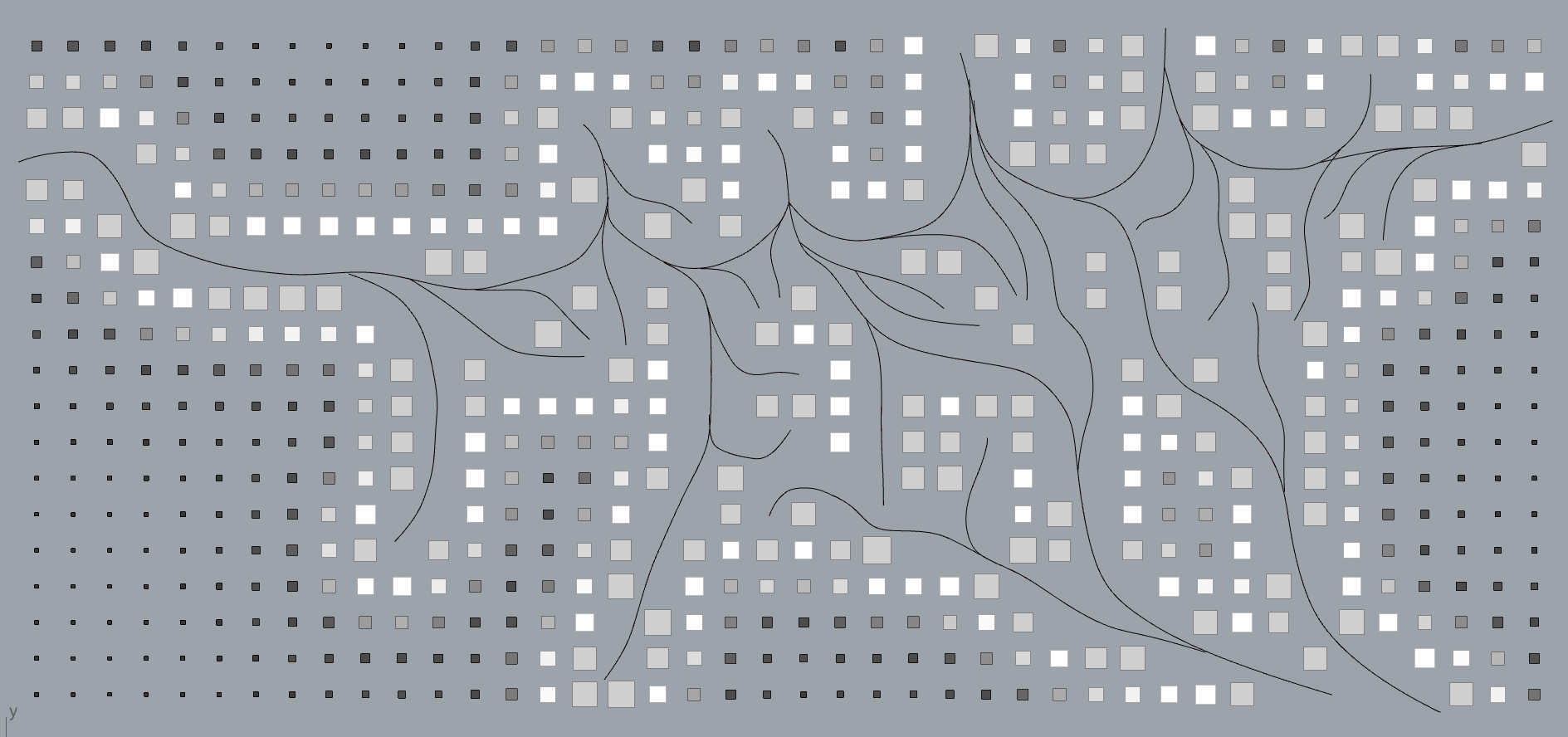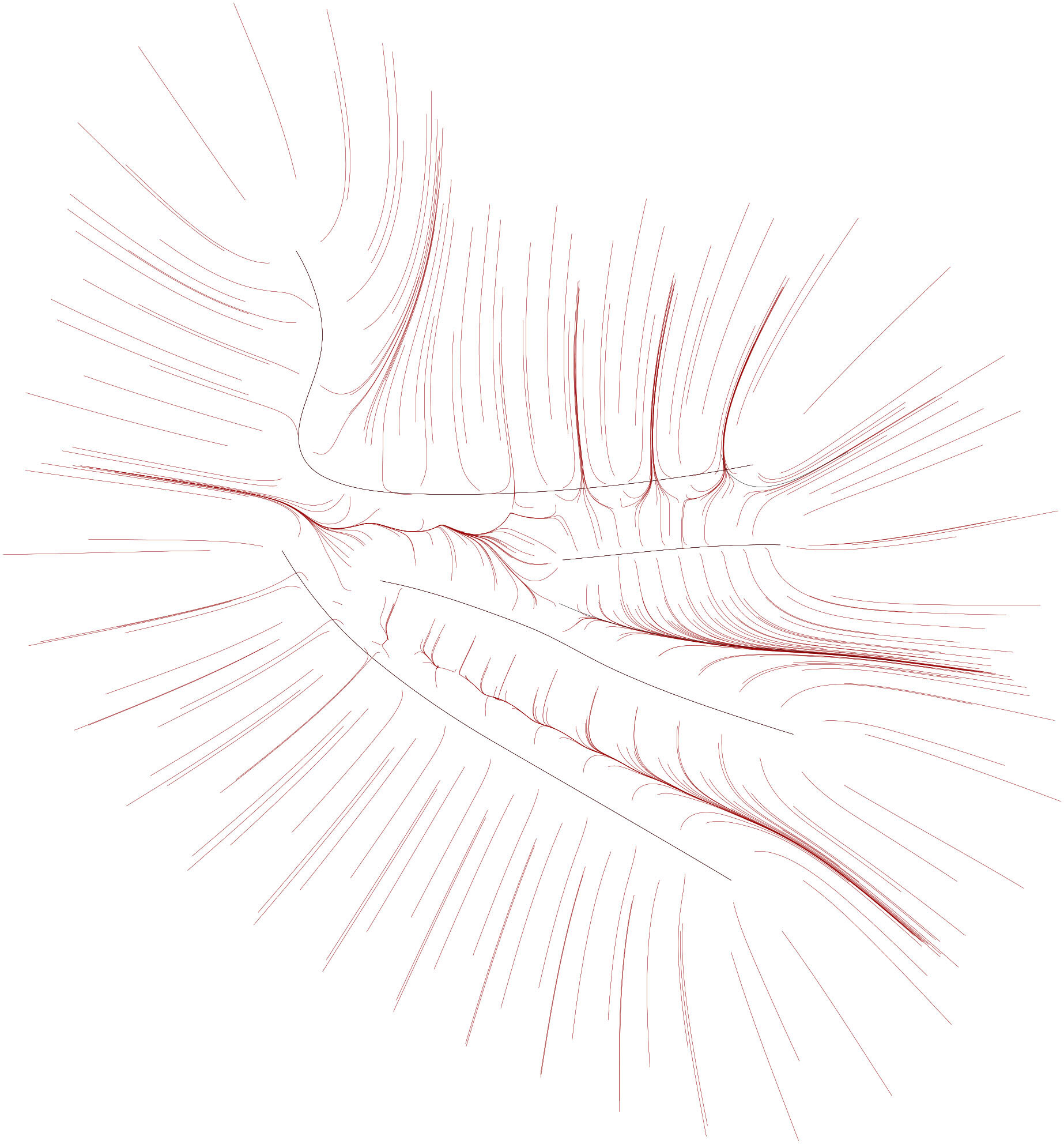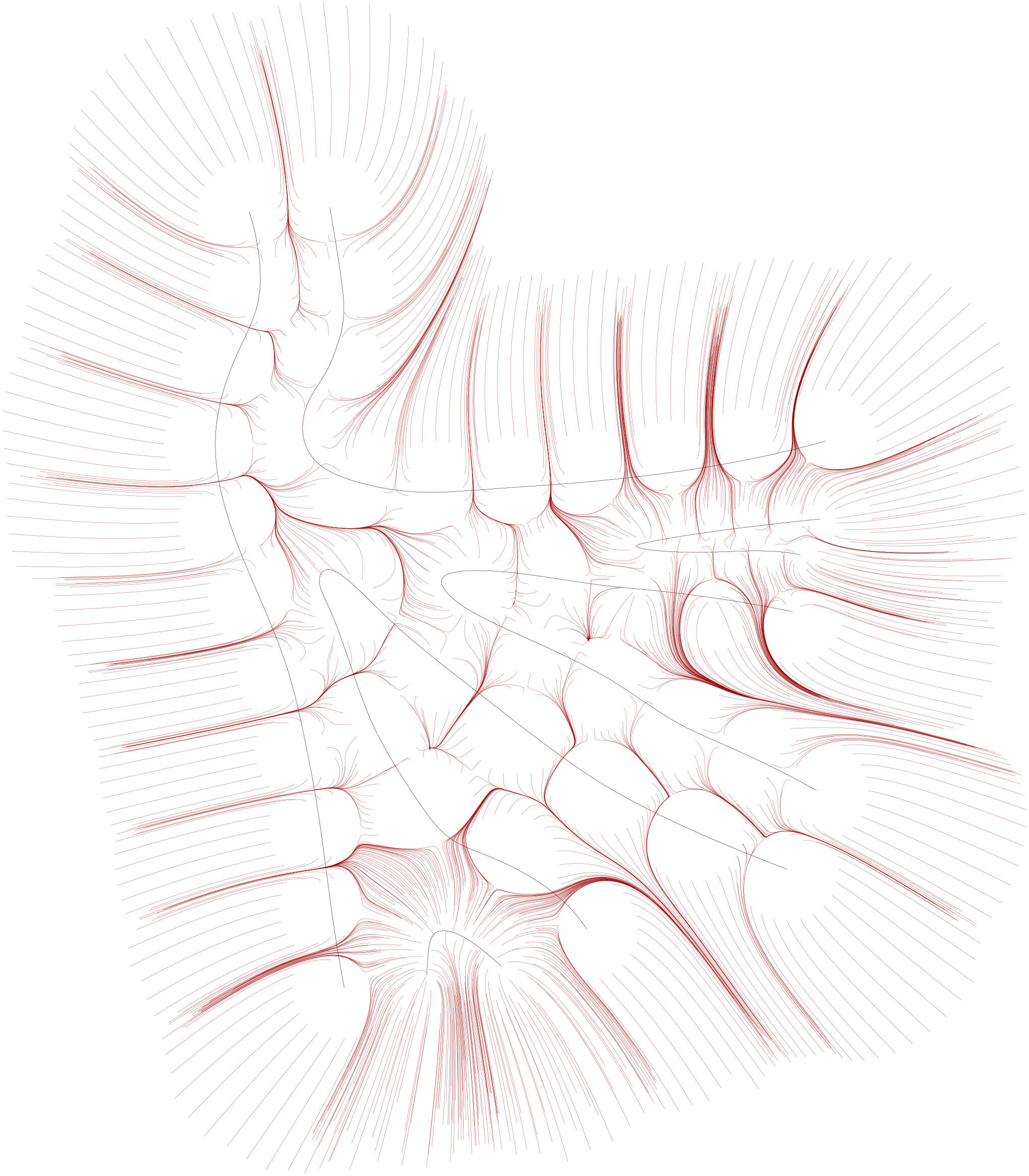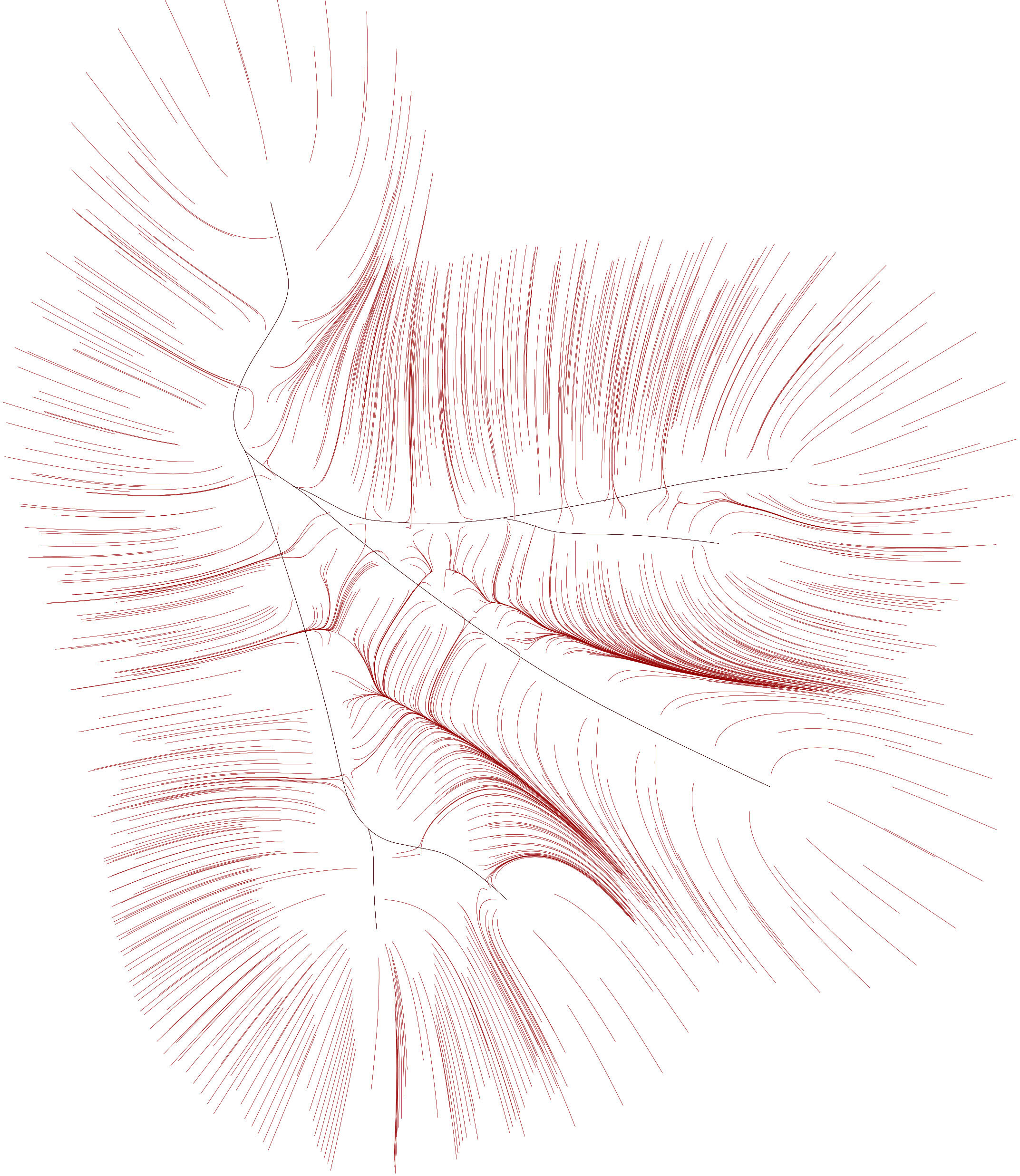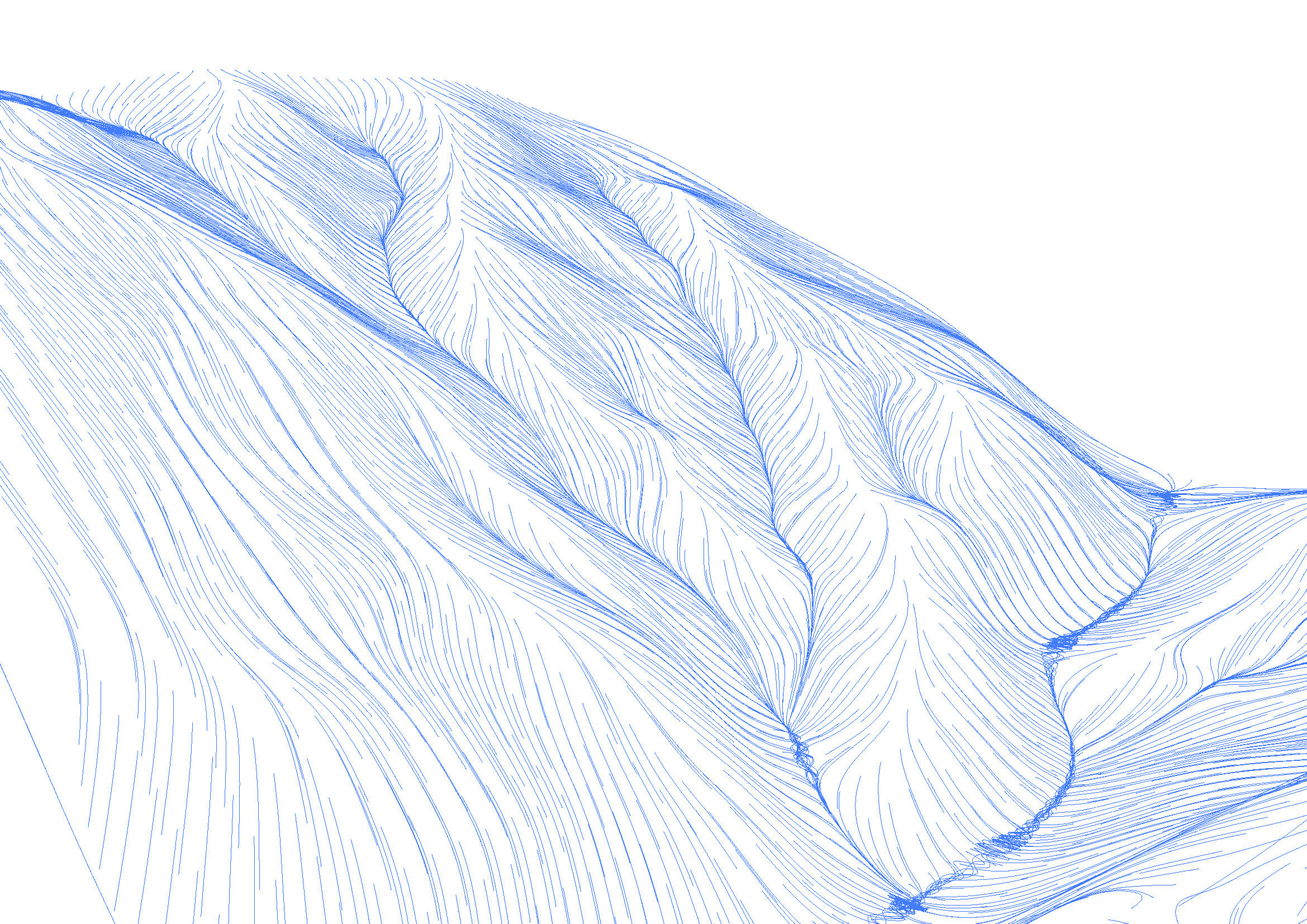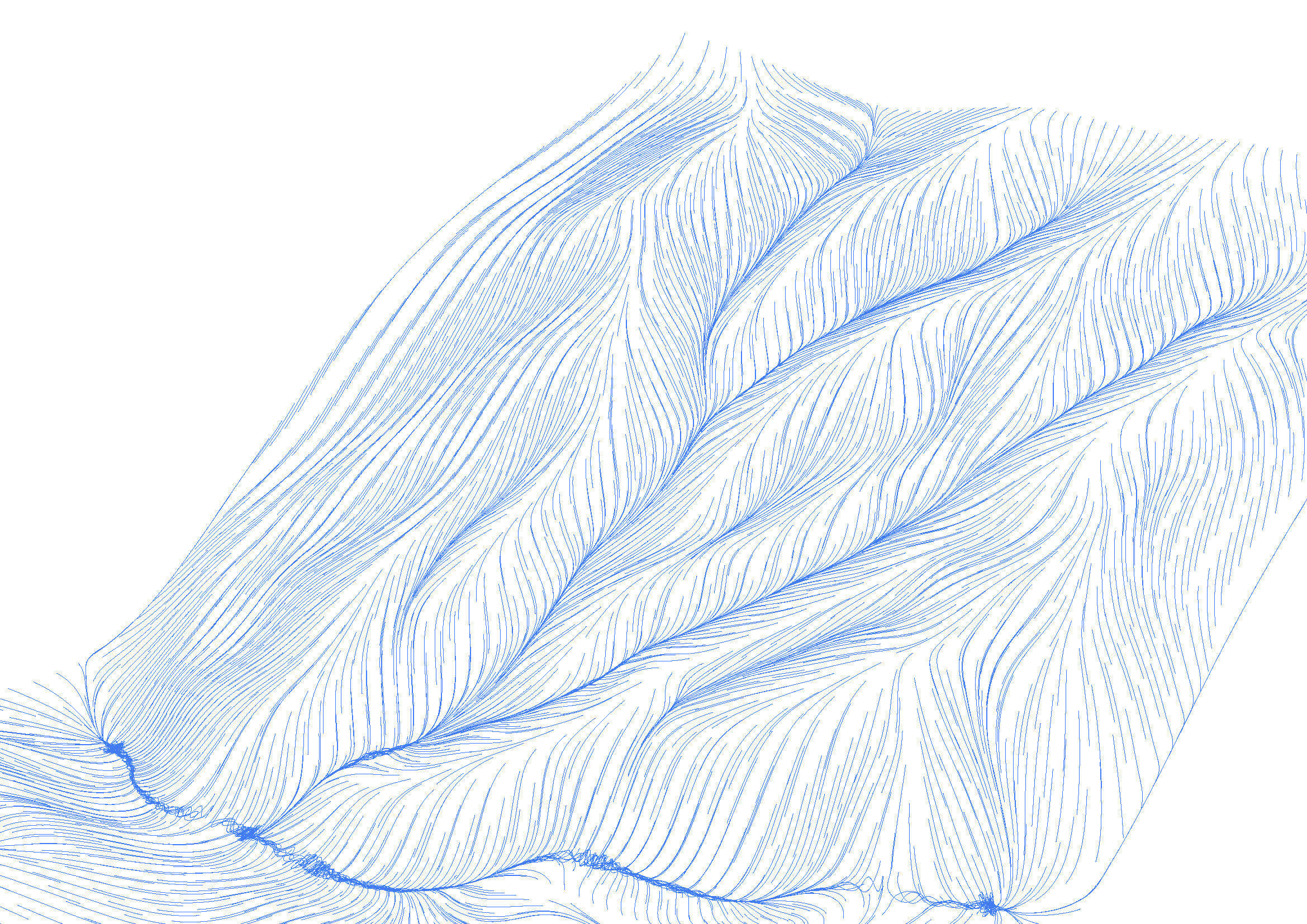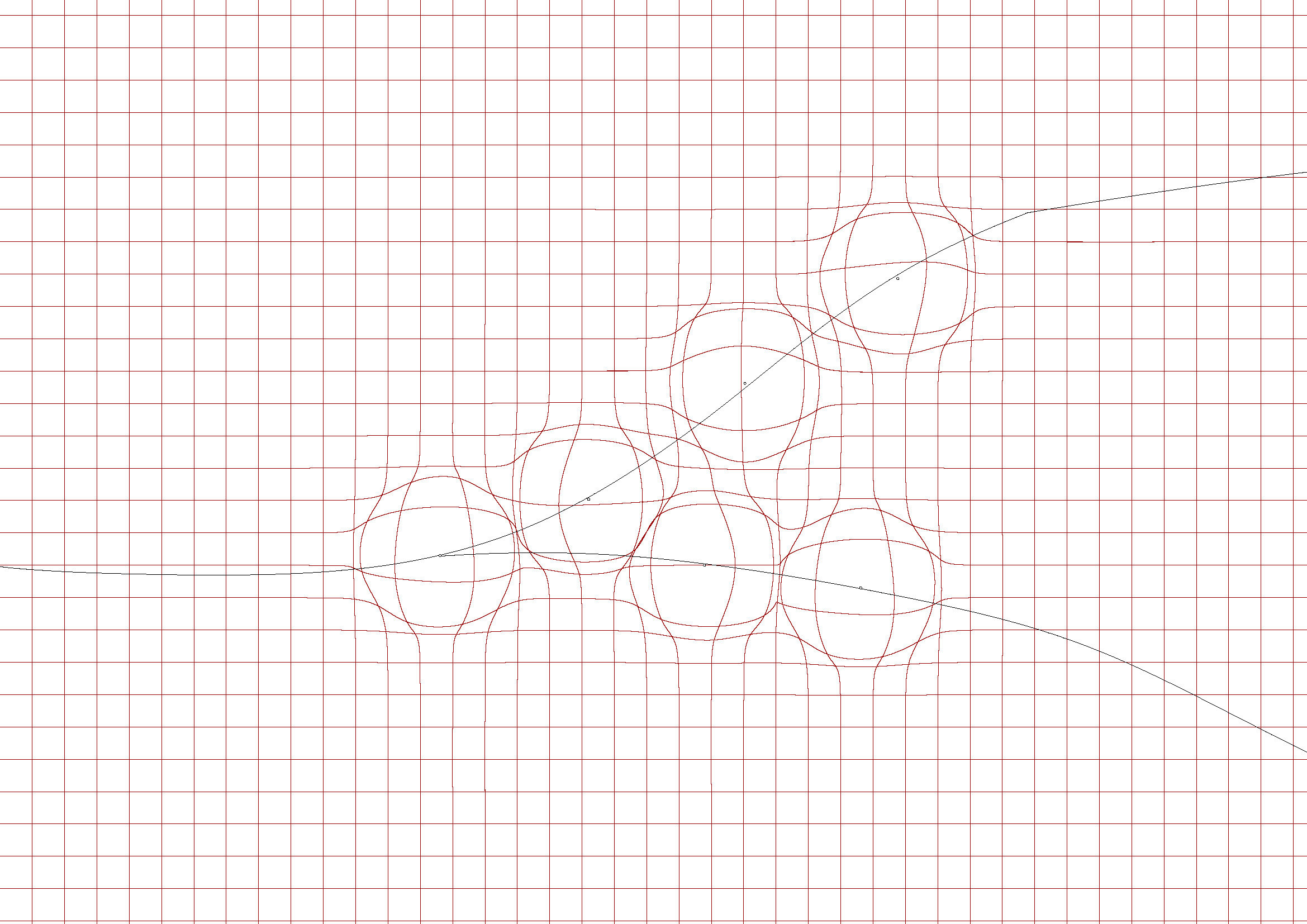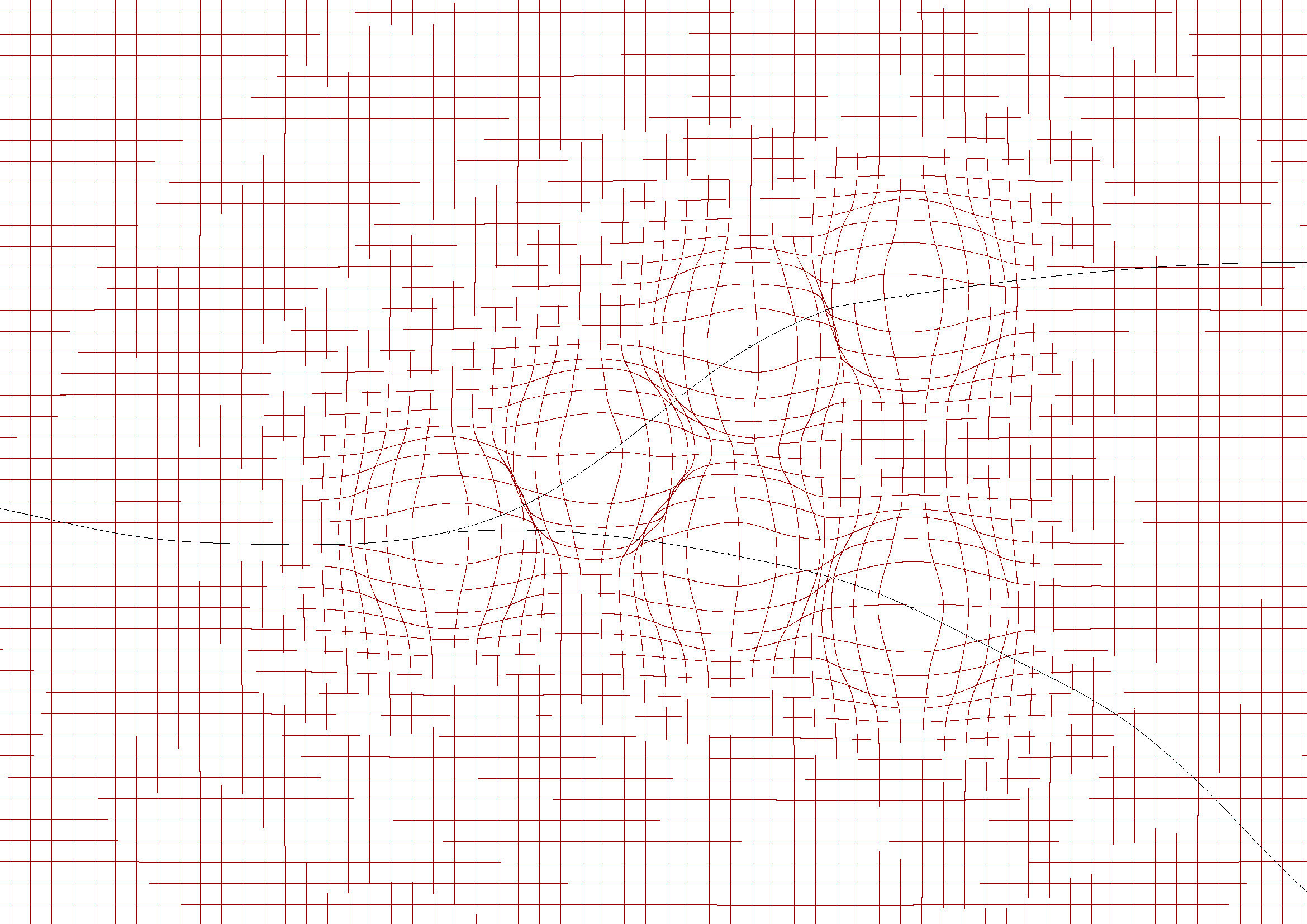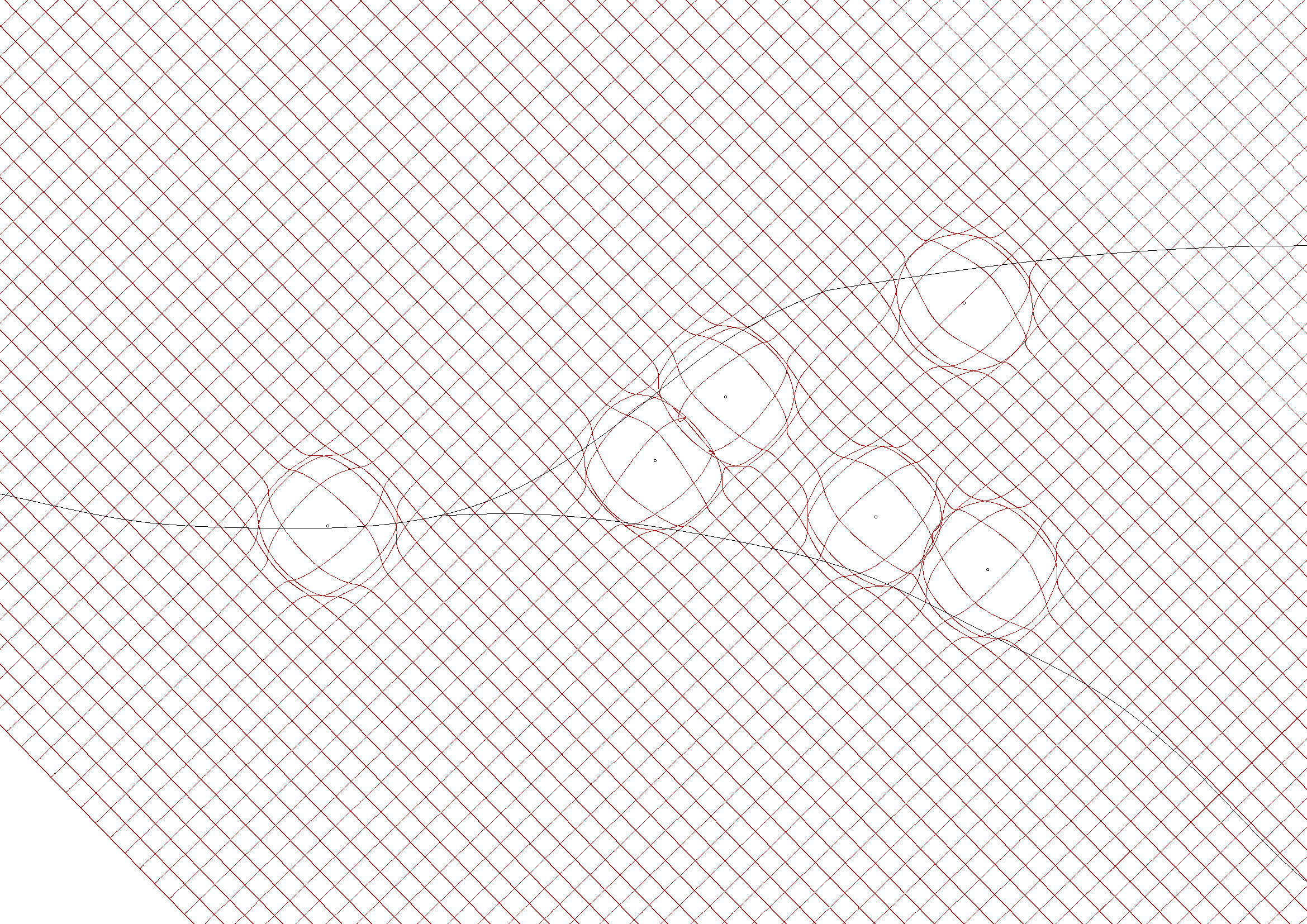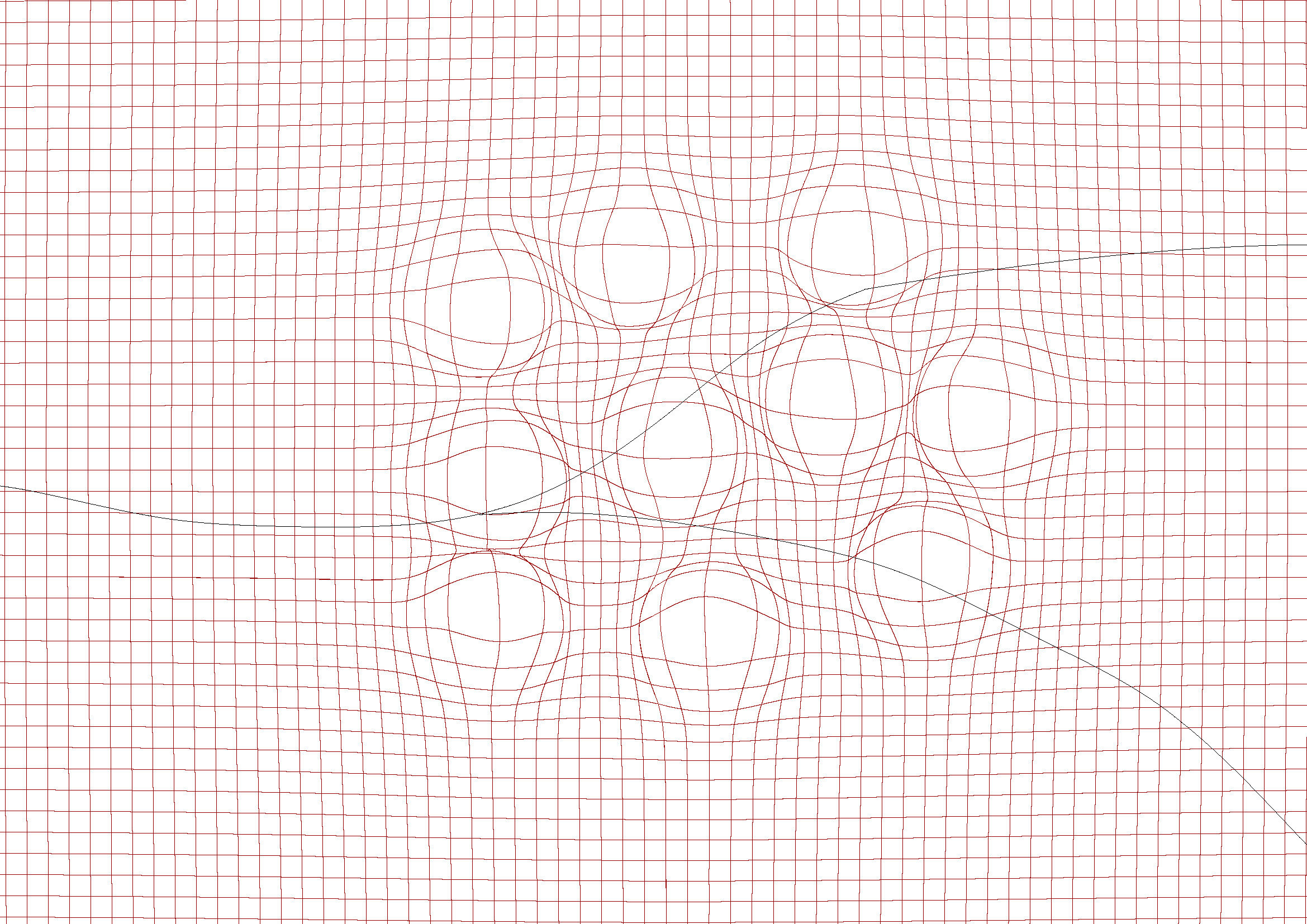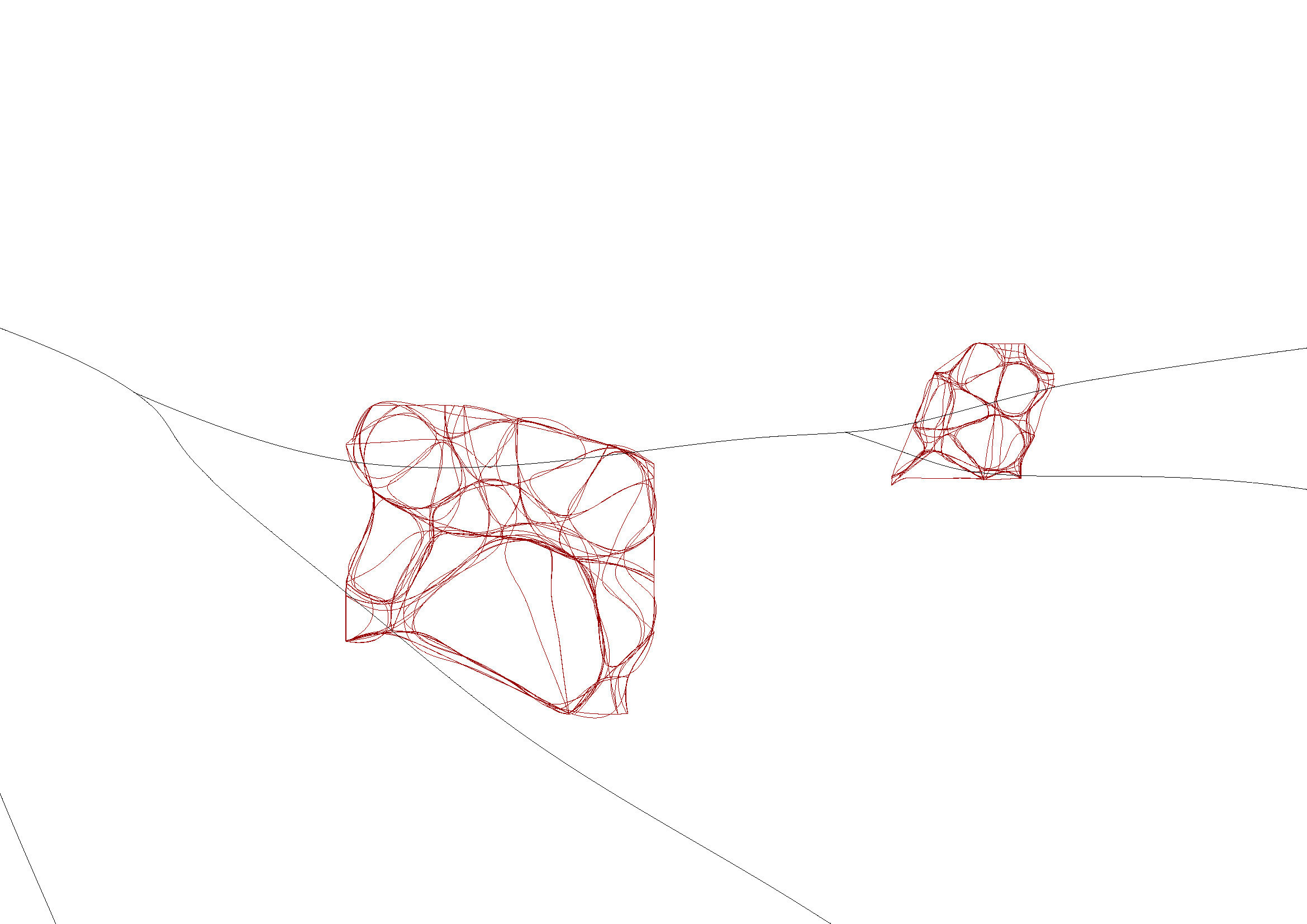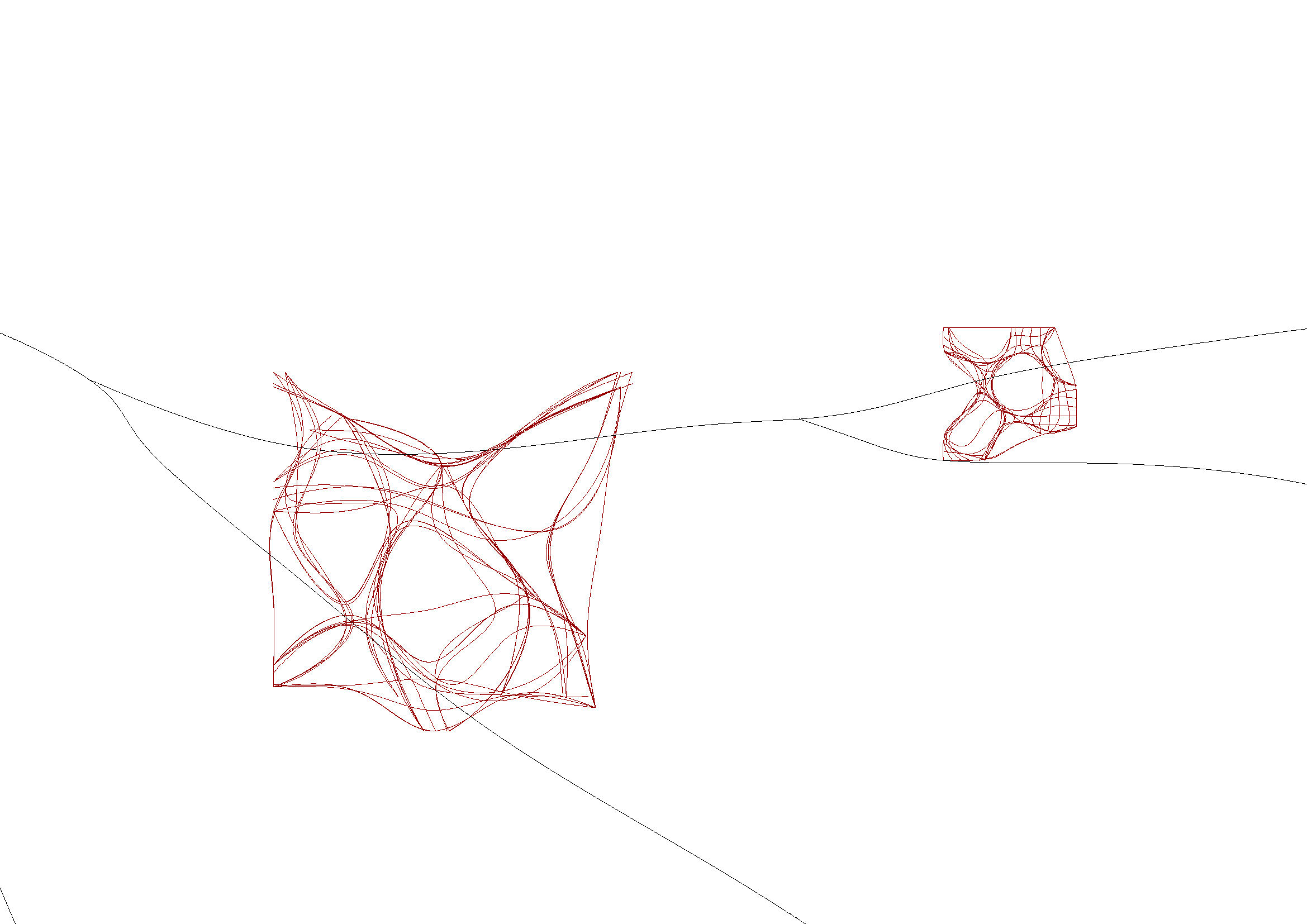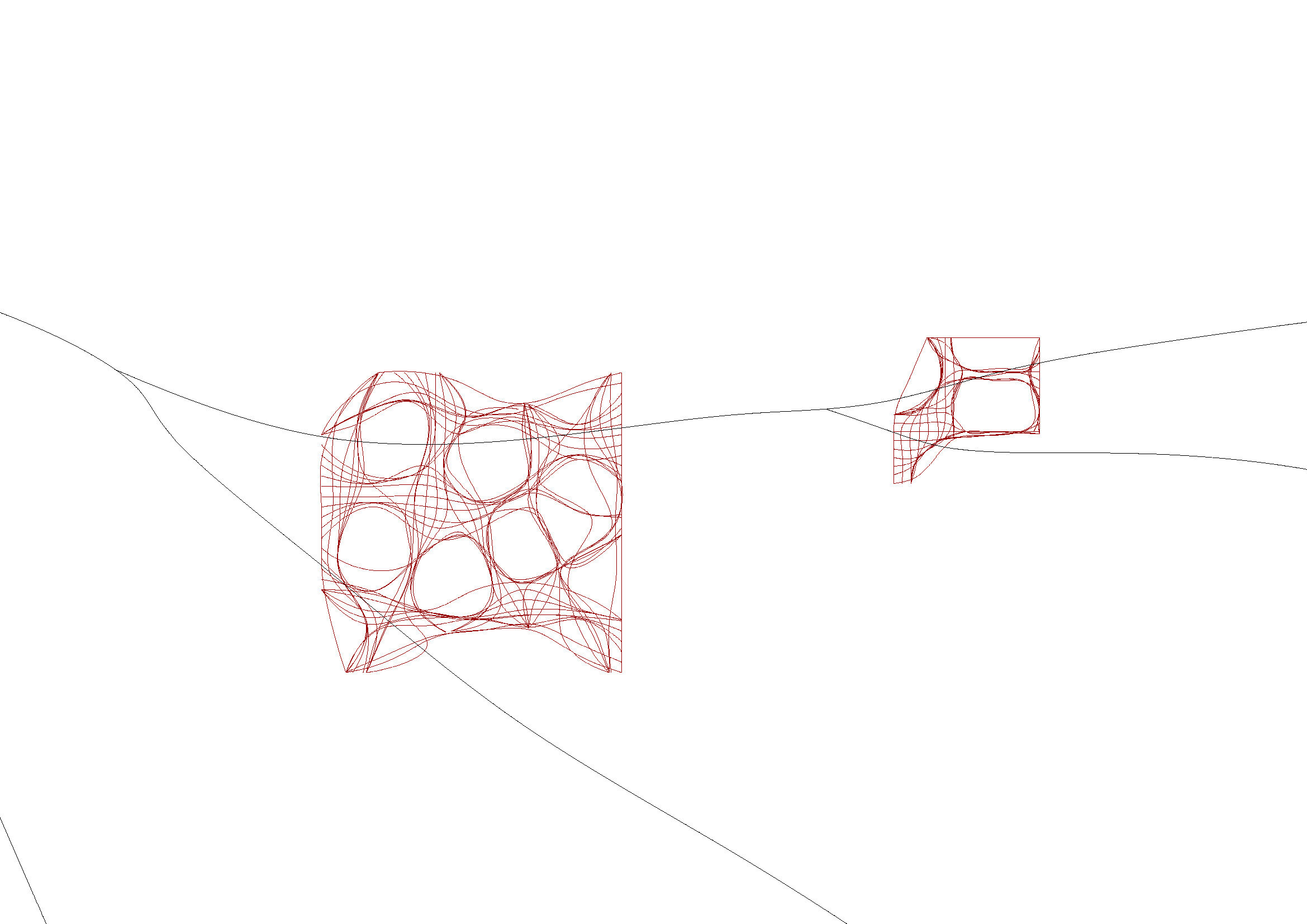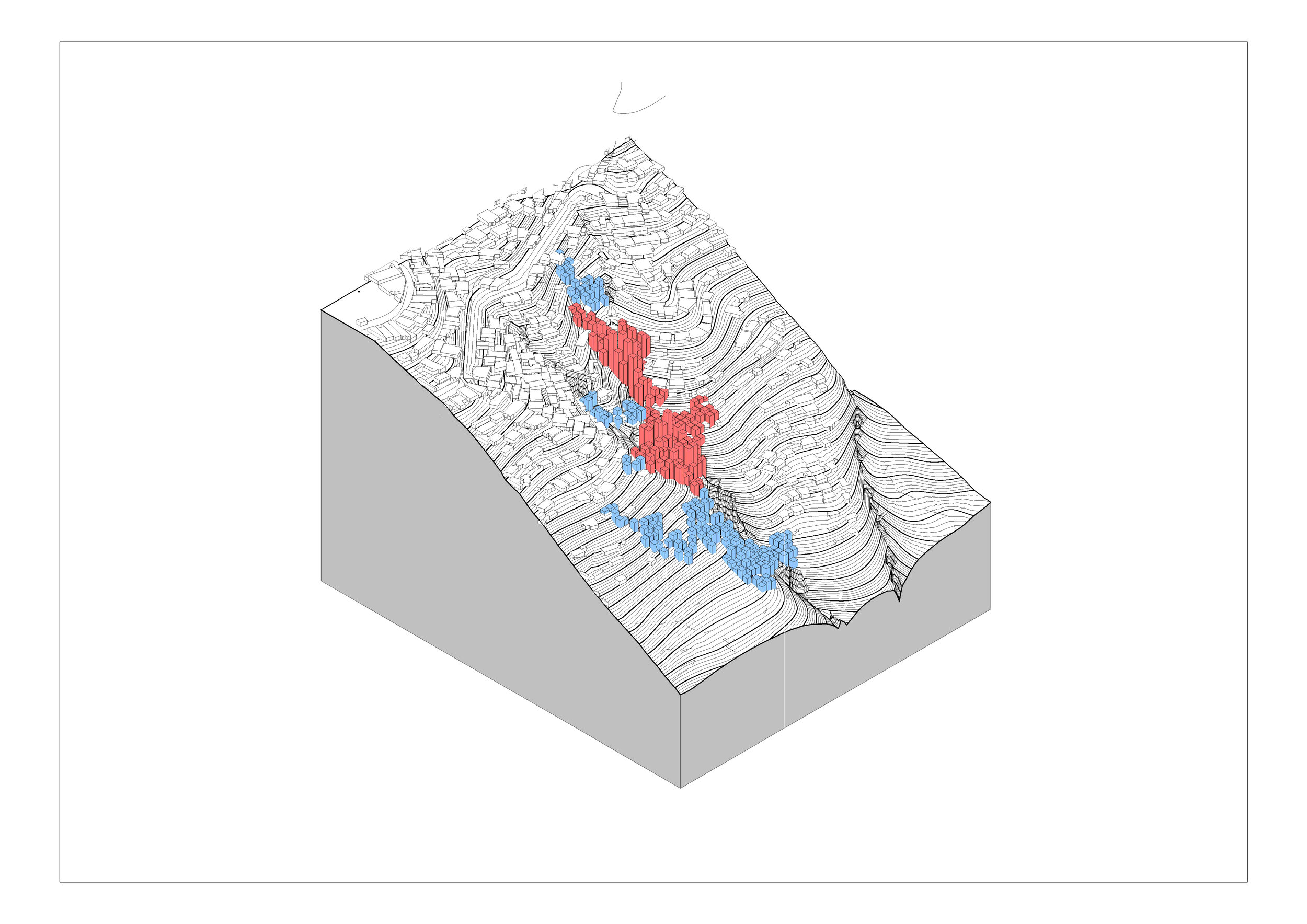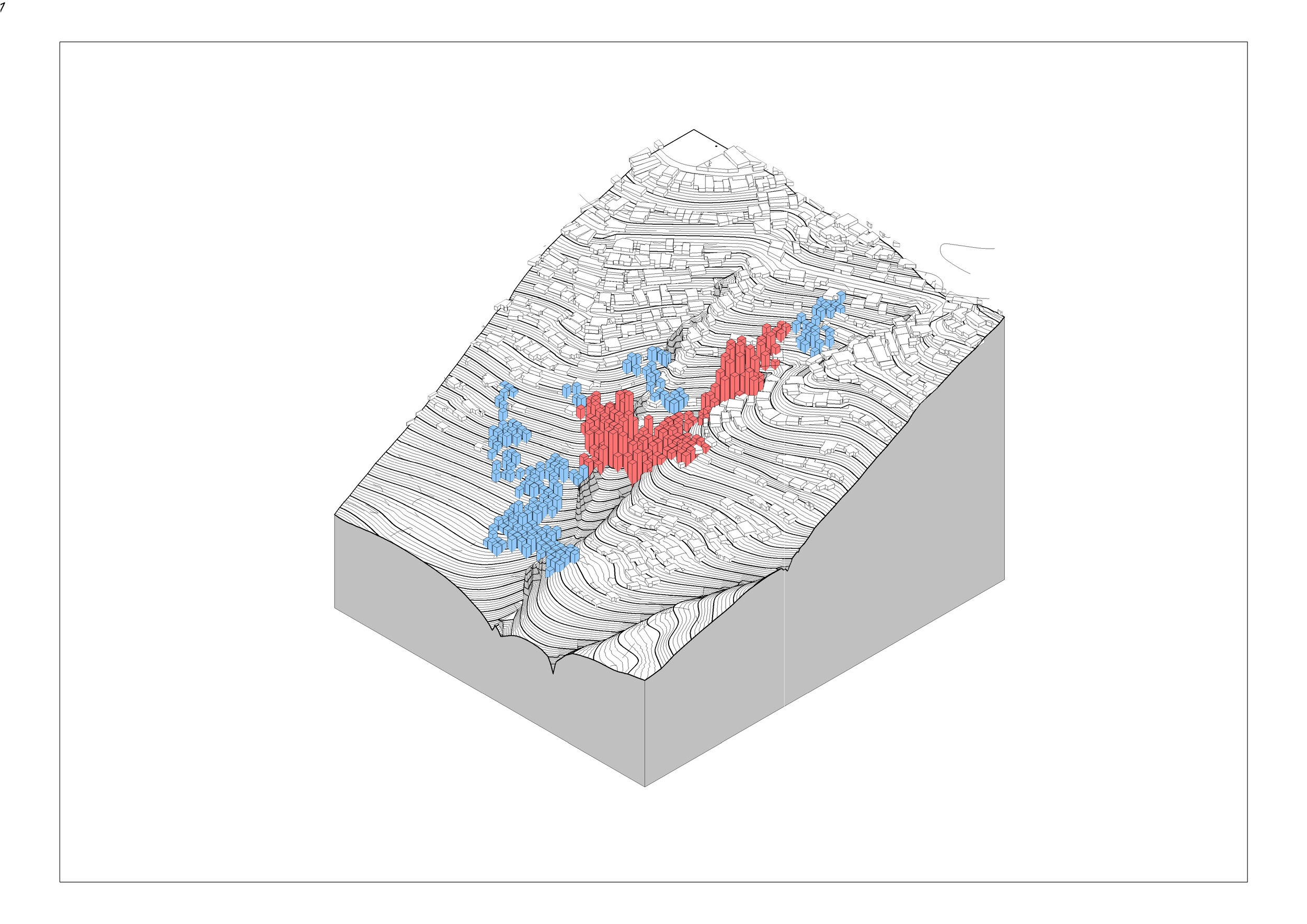Caracas Water Treatment and Agricultural Centre - Computational Experimentation
Throughout the development of a conceptual form, a number of computational studies were undertaken to play with how water, movement and forces can be used to design.
This is an attractor field. The script allows the generation of shapes depending on the proximity to a line or a curve. These shapes change in size as a result of this proximity. The curve itself is generated by the existing river and is used to align and change the shapes and has the potential to change in height.
These are experimental vector fields that are used to represent the flow of water along a terrain using the curved lines. They are controlled by decay, length and charge. These are also based off the existing river using this as a guide for the generated lines.
Through refinement of the Grasshopper script, the vector field uses the surface terrain on the site to represent the flow of water along the surface when flooding or rainfall takes effect.
Grid Distortion is another example of using attractors. This process follows the same principles of the first attractor script but instead, it uses a grid system to distort and curve lines to make organic and fluid shapes. These can be refined and controlled by using anchor points along the existing river and curvature of the terrain to generate the initial 2D form of architecture.
The random walker script is used to generate a path of shapes along the terrain. These shapes can then be extruded to create simple geometric forms that can be conceptually used for an architectural framework.


